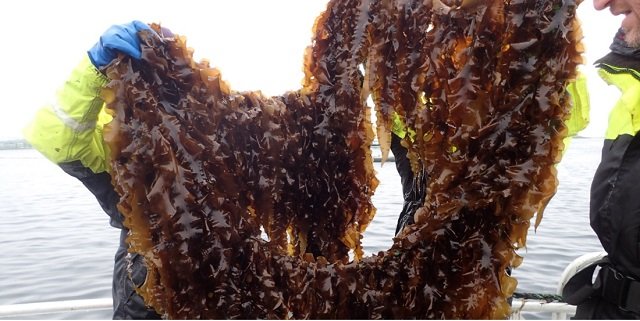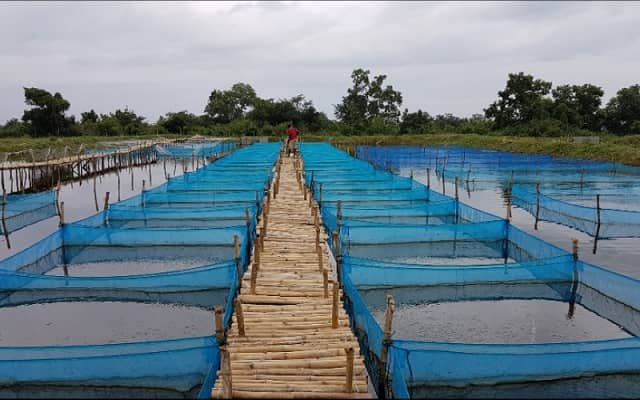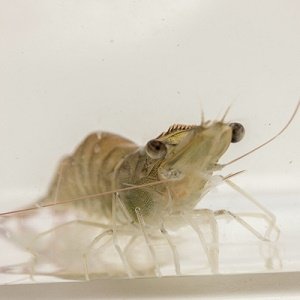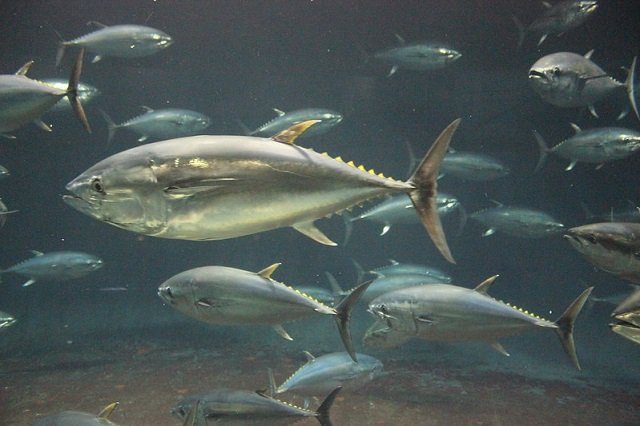
Seaweed farming has become a cornerstone of global aquaculture, accounting for more than half of total coastal and marine production in terms of biomass. However, this rapidly growing industry faces a significant threat: disease outbreaks. These outbreaks not only decimate yields but also pose a serious risk to the economic viability of seaweed farms.
A recent study conducted by researchers from the University of California, the Muhammadiyah University of Sorong, the Spanish National Research Council, Hasanuddin University, and Cornell University, published in the Proceedings of the National Academy of Sciences (PNAS), has unveiled the remarkable potential of nature-based solutions—specifically, co-cultivating seaweed with seagrass meadows—to combat diseases and enhance economic returns. This approach offers a sustainable and ecologically sound strategy for managing seaweed farms.
The Link Between Seagrass Meadows and Reduced Bacterial Pathogens
The study, which included a meta-analysis of scientific literature spanning four decades, identified 17 known seaweed diseases caused by bacteria. Interestingly, these same bacteria were found to be less abundant in areas associated with seagrass meadow ecosystems. This finding suggests that seagrass meadows could play a critical role in suppressing harmful bacterial populations.
Real-World Evidence from Seaweed Farms in Indonesia
To further investigate this connection, researchers conducted large-scale monitoring at seaweed farms in Indonesia, analyzing more than 8,000 individual seaweed samples.
The results were striking: seaweed cultivated directly within seagrass meadow ecosystems experienced a 75% reduction in disease risk compared to farms where seagrass meadows had been removed. This direct comparison provides compelling evidence of the protective effect of seagrass meadows.
“Cultivated seaweed is a cornerstone of the blue economy, with potential applications ranging from plastic alternatives to biofuels and even carbon capture technologies,” said Professor Joleah Lamb from the University of California. “Our study presents the first evidence that coastal seagrass ecosystems can naturally reduce disease risks in farmed seaweed, paving the way for a more resilient and profitable aquaculture industry.”
Economic Benefits of Integrated Aquaculture
Beyond ecological advantages, the study also explored the economic implications of integrating seagrass meadows into seaweed farming practices. Researchers estimated that cultivating seaweed alongside seagrass could lead to a substantial increase in annual revenues, ranging from $292,470 to $1,015,990 USD per square kilometer. This significant economic boost is attributed to reduced yield losses from disease prevention.
Professor Lamb emphasized the economic and ecological implications of the findings. “By leveraging the natural filtration services of seagrass ecosystems, seaweed farmers can not only reduce losses from diseases but also support biodiversity and mitigate environmental impacts,” she said. “This approach aligns perfectly with global initiatives to promote sustainable development and ocean health.”
Stay Always Informed
Join our communities to instantly receive the most important news, reports, and analysis from the aquaculture industry.
Global Potential for Sustainable Seaweed Farming
The study’s findings have global implications. Researchers identified approximately 20.7 million square kilometers across 107 countries and 34 territories with suitable environmental conditions for implementing this integrated farming approach. This vast potential underscores the global utility of nature-based solutions for sustainable aquaculture.
The study highlights the urgency of protecting and restoring seagrass meadows, which are declining at an alarming rate of 7% annually due to coastal development and other human activities. As Professor Lamb noted, “Seagrass ecosystems are fundamental to the health of our planet, providing services such as carbon sequestration, water filtration, and coastal protection. Our findings demonstrate that their conservation is not just an environmental imperative but also an economic opportunity.”
Conclusions
The research provides robust evidence of the ecological and economic benefits of incorporating seagrass meadows into seaweed farming practices. By harnessing the natural protective functions of seagrass ecosystems, the seaweed farming industry can move toward a more sustainable and resilient future, ensuring both ecological health and economic prosperity. This strategy represents a powerful example of how nature-based solutions can deliver effective and sustainable responses to pressing aquaculture challenges.
Contact
Joleah B. Lamb
Department of Ecology and Evolutionary Biology, University of California
Irvine, CA 92697
Email: joleah.lamb@uci.edu
Reference (open access)
Fiorenza, E. A., Abu, N., Feeney, W. E., Limbong, S. R., Freimark, C. B., Jompa, J., Harvell, C. D., & Lamb, J. B. (2024). Seagrass ecosystems reduce disease risk and economic loss in marine farming production. Proceedings of the National Academy of Sciences, 121(52), e2416012121. https://doi.org/10.1073/pnas.2416012121
Editor at the digital magazine AquaHoy. He holds a degree in Aquaculture Biology from the National University of Santa (UNS) and a Master’s degree in Science and Innovation Management from the Polytechnic University of Valencia, with postgraduate diplomas in Business Innovation and Innovation Management. He possesses extensive experience in the aquaculture and fisheries sector, having led the Fisheries Innovation Unit of the National Program for Innovation in Fisheries and Aquaculture (PNIPA). He has served as a senior consultant in technology watch, an innovation project formulator and advisor, and a lecturer at UNS. He is a member of the Peruvian College of Biologists and was recognized by the World Aquaculture Society (WAS) in 2016 for his contribution to aquaculture.




